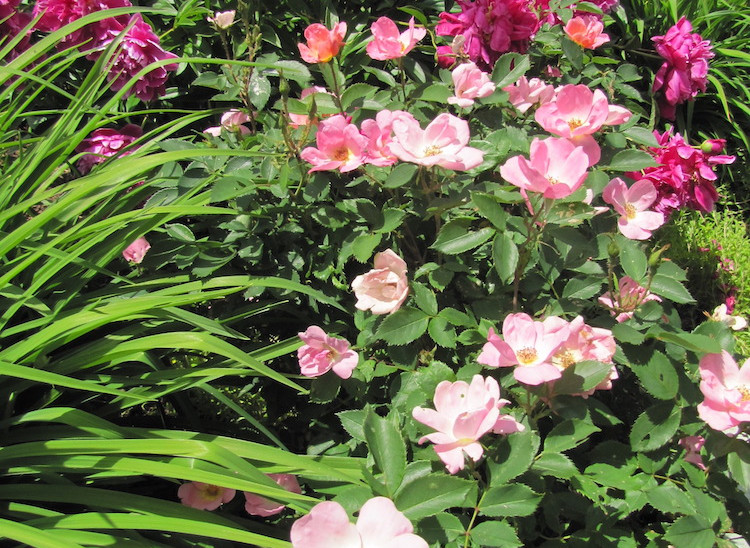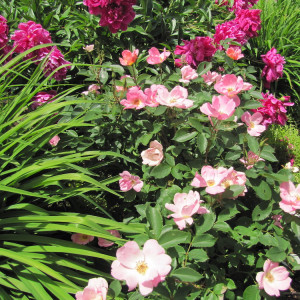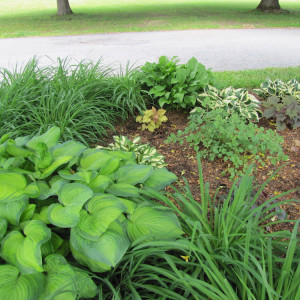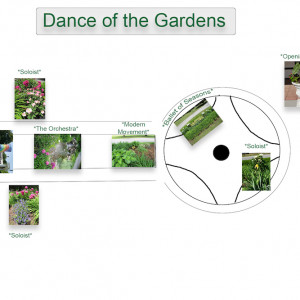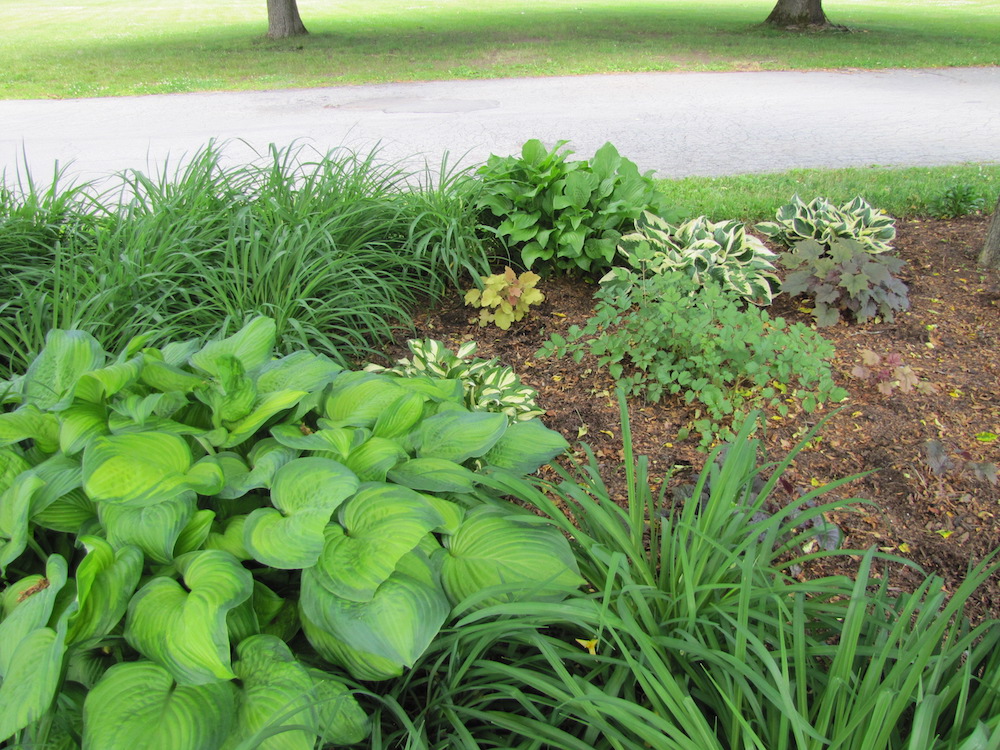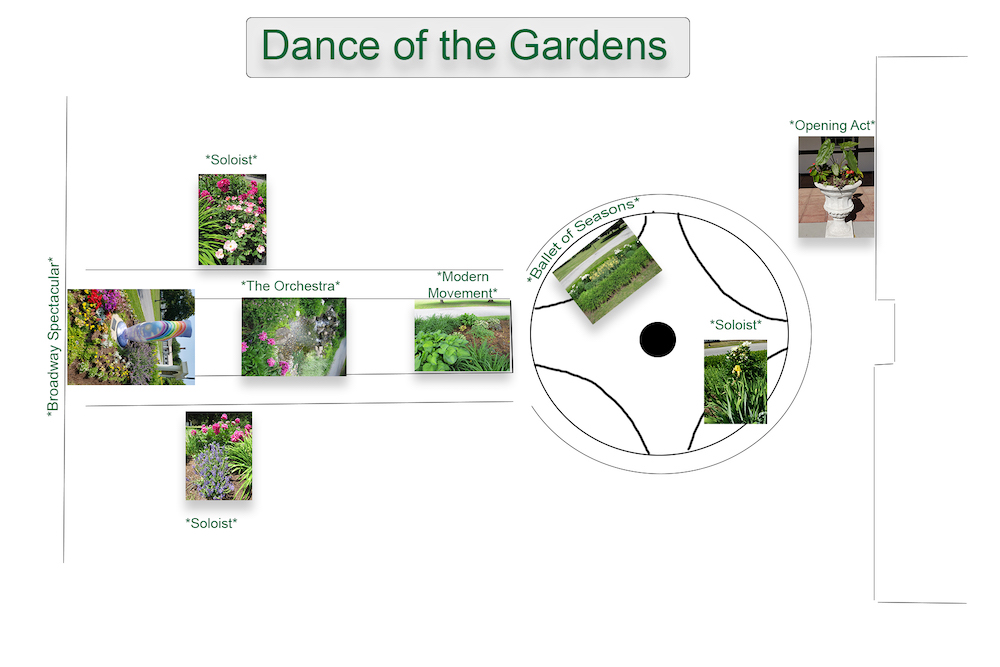Dance of the Gardens
Over the years my work with the gardens at the National Museum of Dance has allowed me to demonstrate the close relationship of gardens with dance. Various areas of each garden reflect different dance styles and relate to choreography within the natural environment. The gardens have become a seasonal tribute to the enduring art form of dance.
How Do Gardens Relate to Dance? Gardens and nature in general have served as an inspiration for many art forms. Well-designed all-season gardens boast flow and movement not unlike a choreographed dance. The natural change of the seasons, spring, summer and fall offer a sequence of “Garden Acts” similar to a dance piece.
Seasonal plant blooms have specific roles in the garden dance much like the principles, soloists, and chorus. Plant color, texture, size and formation in the garden can reflect the various styles of dance as seen in ballet, modern and Broadway musical pieces. Each unique plant element is like the dancers costume. Relative to the dance theme, your eyes are directed to their bright or muted colors. Many garden accents “set the stage” for the dance. They can be the stage backdrop and symphony for the performance.

